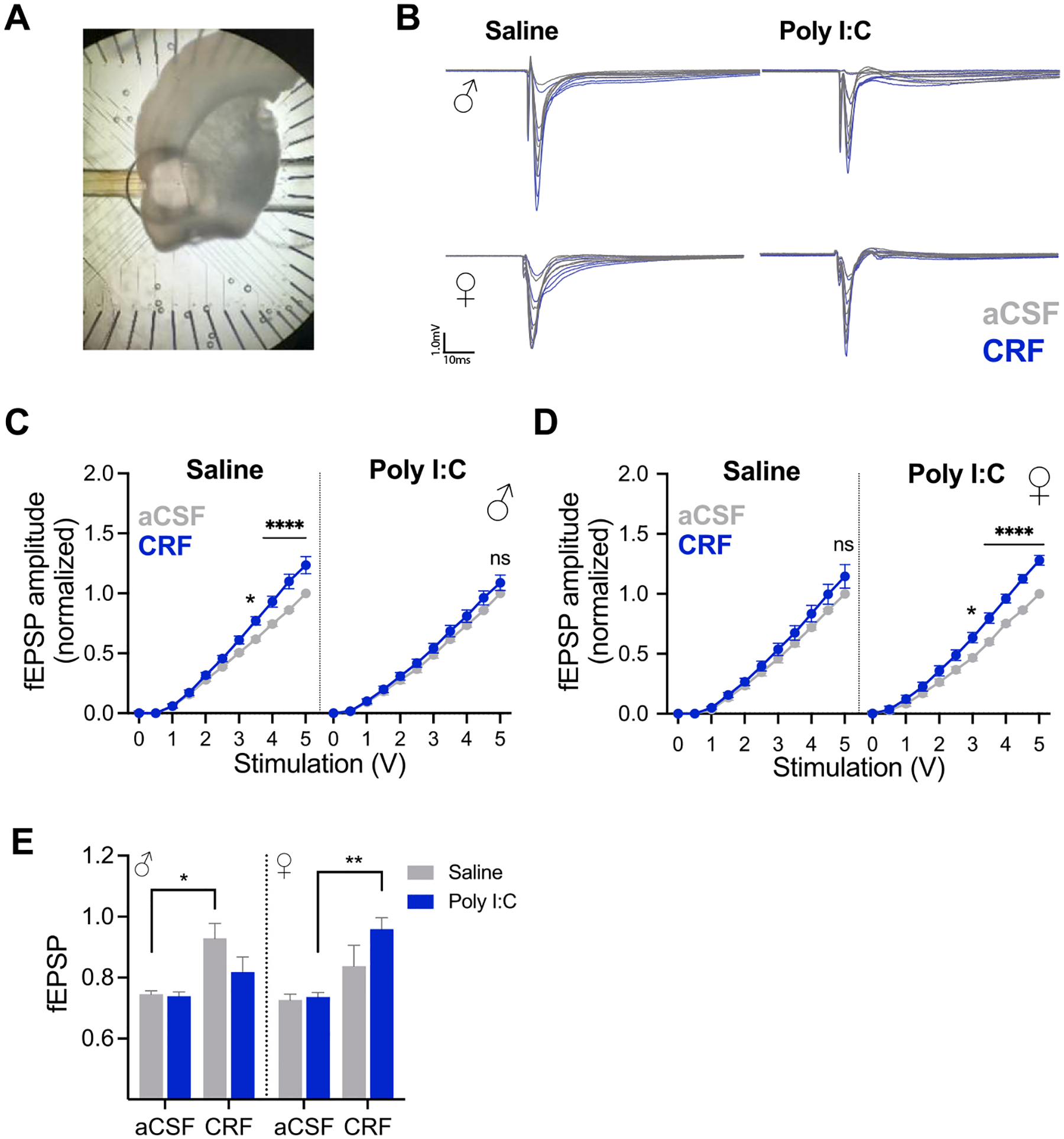Fig. 3.

Effect of CRF on insular synaptic efficacy after maternal immune activation in males and females. A. Photograph of coronal section with insular cortex placed over the perforated multiple electrode array. B. Representative fEPSPs were recorded in aCSF then after CRF (300 nM) by biphasic stimuli from 0 to 5 V. Data were analyzed as peak fEPSP amplitude normalized to the 5 V response at each channel observed in aCSF. C–D. Mean (+/− SEM) fEPSP amplitude before and after CRF application in acute slices from adult males (C, ns = 10–11 slices per condition) and females (D, n = 10 slices per condition). In slices from male saline offspring and from female Poly I:C offspring CRF increased fEPSP amplitude at higher voltages (* indicate significant differences between aCSF and CRF fEPSP, see text for additional statistics). CRF had no effect on slices from Poly I:C male or saline female offspring. E. Mean (+SEM) normalized fEPSP in response to CRF at the highest stimulation voltages (2.5 to 5) from males and females. A significant Sex by CRF by MIA interaction is present (p = 0.042). *p < 0.05, **p < 0.01, ****p < 0.0001.
